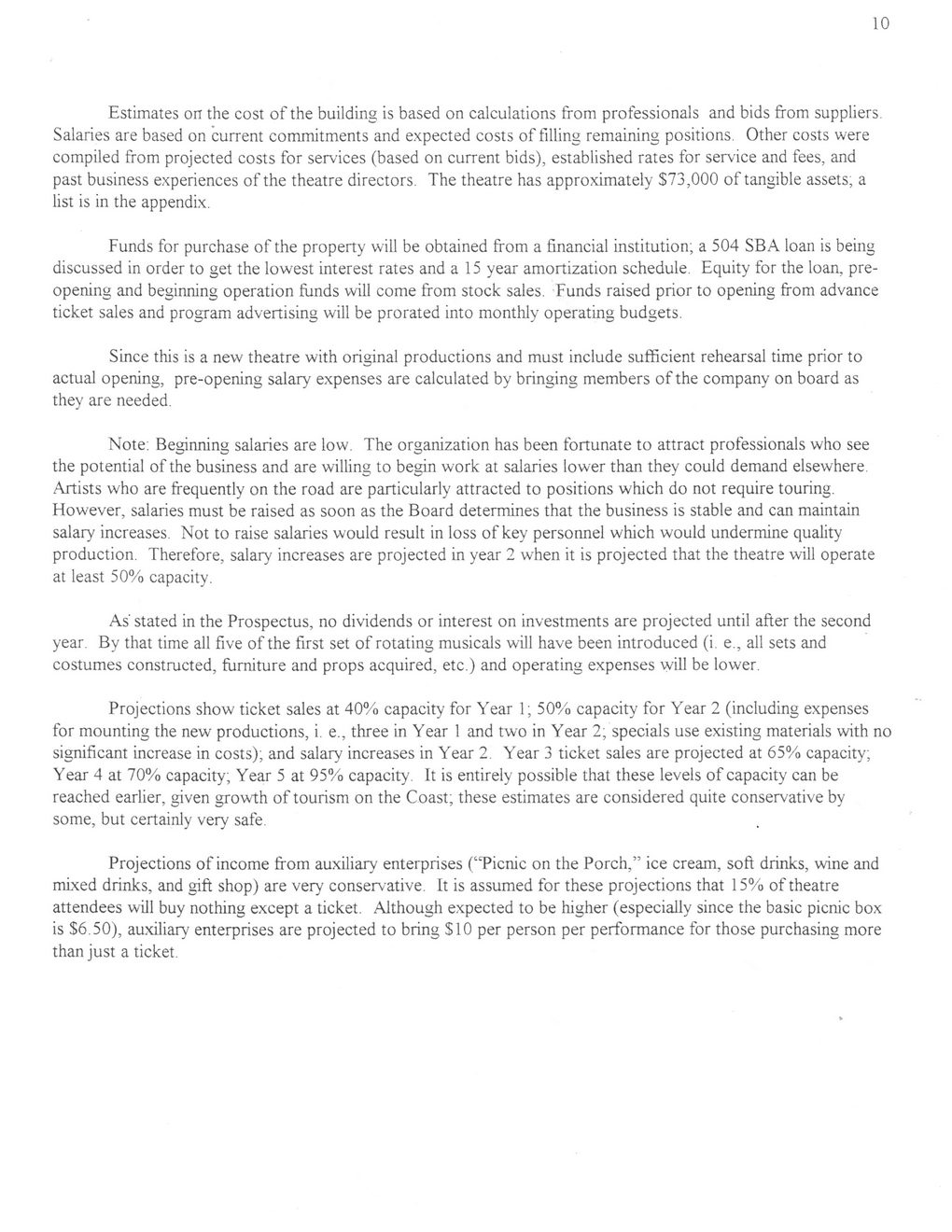This text was obtained via automated optical character recognition.
It has not been edited and may therefore contain several errors.
10 Estimates on the cost of the building is based on calculations from professionals and bids from suppliers. Salaries are based on current commitments and expected costs of filling remaining positions. Other costs were compiled from projected costs for services (based on current bids), established rates for service and fees, and past business experiences of the theatre directors. The theatre has approximately $73,000 of tangible assets, a list is in the appendix. Funds for purchase of the property will be obtained from a financial institution; a 504 SBA loan is being discussed in order to get the lowest interest rates and a 15 year amortization schedule. Equity for the loan, preopening and beginning operation funds will come from stock sales. Funds raised prior to opening from advance ticket sales and program advertising will be prorated into monthly operating budgets. Since this is a new theatre with original productions and must include sufficient rehearsal time prior to actual opening, pre-opening salary expenses are calculated by bringing members of the company on board as they are needed. Note: Beginning salaries are low. The organization has been fortunate to attract professionals who see the potential of the business and are willing to begin work at salaries lower than they could demand elsewhere. Artists who are frequently on the road are particularly attracted to positions which do not require touring. However, salaries must be raised as soon as the Board determines that the business is stable and can maintain salary increases. Not to raise salaries would result in loss of key personnel which would undermine quality production. Therefore, salary increases are projected in year 2 when it is projected that the theatre will operate at least 50% capacity. As' stated in the Prospectus, no dividends or interest on investments are projected until after the second year. By that time all five of the first set of rotating musicals will have been introduced (i. e., all sets and costumes constructed, furniture and props acquired, etc.) and operating expenses will be lower. Projections show ticket sales at 40% capacity for Year 1; 50% capacity for Year 2 (including expenses for mounting the new productions, i. e., three in Year 1 and two in Year 2, specials use existing materials with no significant increase in costs), and salary increases in Year 2. Year 3 ticket sales are projected at 65% capacity; Year 4 at 70% capacity; Year 5 at 95% capacity. It is entirely possible that these levels of capacity can be reached earlier, given growth of tourism on the Coast, these estimates are considered quite conservative by some, but certainly very safe. Projections of income from auxiliary enterprises (‘Ticnic on the Porch,” ice cream, soft drinks, wine and mixed drinks, and gift shop) are very conservative. It is assumed for these projections that 15% of theatre attendees will buy nothing except a ticket. Although expected to be higher (especially since the basic picnic box is $6.50), auxiliary enterprises are projected to bring $10 per person per performance for those purchasing more than just a ticket.

Paddlewheel Productions Document (015)